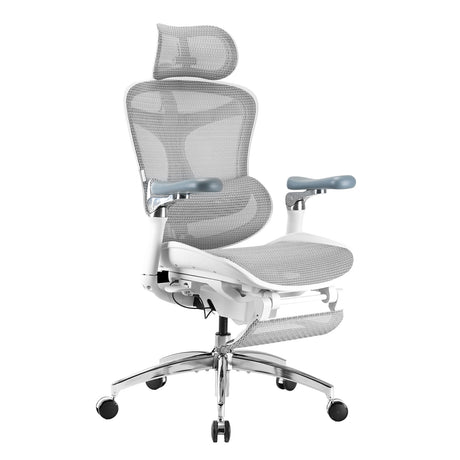Office chairs are essential furniture pieces in any workspace, contributing significantly to comfort, productivity, and overall well-being. However, when it comes to selecting office chairs, budget constraints often influence decisions. Many opt for cheaper alternatives, raising the question: How long do cheap office chairs last? In this comprehensive guide, we delve into the lifespan of inexpensive office chairs, exploring factors that affect durability, maintenance tips to extend their longevity, and whether investing in pricier options is worth it in the long run.
Understanding Cheap Office Chairs:
Cheap office chairs are typically mass-produced with cost-effective materials to meet affordability demands. These chairs often feature basic designs, minimal ergonomic features, and lower-quality components compared to their more expensive counterparts. While they may seem like a bargain initially, their durability and longevity can vary significantly depending on several factors.
Factors Affecting the Lifespan of Cheap Office Chairs:
Material Quality:
Cheap office chairs are often constructed from materials such as low-grade plastic, thin upholstery fabric, and inexpensive foam padding. These materials are prone to wear and tear over time, diminishing the chair's structural integrity and comfort level.
Lower-quality components like plastic casters, non-durable frames, and weak mechanisms contribute to the overall fragility of cheap office chairs, impacting their lifespan.
Design and Construction:
The design and construction of office chairs play a crucial role in their durability. Cheap chairs may lack robust construction, leading to issues like loose joints, wobbly frames, and unstable seating surfaces.
Simplified designs with fewer adjustable features may compromise ergonomic support, resulting in discomfort and premature deterioration.
Usage Intensity:
The lifespan of cheap office chairs is heavily influenced by how frequently and intensively they are used. Chairs subjected to prolonged hours of daily use, especially in high-traffic environments like offices or coworking spaces, are more likely to wear out quickly.
Factors such as user weight, movement patterns, and the nature of tasks performed while seated also impact chair longevity.
Maintenance Practices:
Proper maintenance can significantly extend the lifespan of cheap office chairs. Regular cleaning, lubrication of moving parts, and tightening loose screws can help prevent premature wear and damage.
Neglecting maintenance tasks accelerates deterioration, leading to issues like squeaky mechanisms, torn upholstery, and malfunctioning components.
Expected Lifespan of Cheap Office Chairs:
The lifespan of a cheap office chairs can vary widely depending on the factors mentioned above. On average, a low-cost office chair may last anywhere from 1 to 5 years under typical usage conditions. However, some chairs may exhibit signs of wear and malfunction much sooner, while others might endure slightly longer with proper care and occasional repairs.
Signs of Deterioration:
It's essential to recognize the warning signs indicating that a cheap office chair is nearing the end of its lifespan. Some common indicators of deterioration include:
Sagging or deformed seat cushions and backrests.
Wobbly or unstable frame and base.
Difficulty adjusting or locking chair height and tilt mechanisms.
Excessive squeaking or grinding noises from moving parts.
Visible tears, rips, or fraying in upholstery fabric.
Loose or missing screws and fasteners.
Maintenance Tips to Extend Lifespan:
While cheap office chairs may not offer the same durability as their higher-priced counterparts, proper maintenance can help maximize their lifespan. Here are some maintenance tips:
Regular Cleaning:
Wipe down the chair with a damp cloth to remove dust, dirt, and spills.
Use mild soap or upholstery cleaner for fabric surfaces and a plastic-safe cleaner for plastic components.
Avoid abrasive cleaners or harsh chemicals that could damage the chair's finish.
Lubrication:
Periodically lubricate moving parts such as caster wheels, swivel mechanisms, and tilt adjustments with silicone-based lubricants to reduce friction and prevent squeaking.
Follow manufacturer recommendations for lubrication frequency and type of lubricant to use.
Tighten Loose Screws:
Check and tighten any loose screws, bolts, or fasteners to maintain the chair's structural integrity.
Use a screwdriver or wrench as needed, but avoid over-tightening, which could strip the threads or damage the components.
Address Issues Promptly:
Don't ignore signs of wear and tear. Address any issues such as loose joints, torn upholstery, or malfunctioning mechanisms promptly to prevent further damage.
Consider seeking professional repairs or replacement parts when necessary.
Is Investing in a Pricier Office Chair Worth It?
While cheap office chairs may seem like a cost-effective solution initially, investing in a higher-quality chair can offer several long-term benefits:
Enhanced Comfort and Support:
Premium office chairs often feature advanced ergonomic designs, adjustable lumbar support, and high-density foam padding, providing superior comfort and support for extended periods of sitting.
Ergonomically designed chairs promote better posture, reduce fatigue, and minimize the risk of musculoskeletal issues associated with prolonged sitting.
Durability and Longevity:
High-quality office chairs are constructed from durable materials such as steel frames, reinforced plastic, and premium upholstery fabrics, ensuring long-lasting performance and reliability.
Built-in quality control measures and superior craftsmanship contribute to the overall durability and lifespan of pricier chairs, making them a worthwhile investment for long-term use.
Improved Productivity and Well-Being:
Comfortable and supportive seating can enhance productivity by reducing distractions and discomfort associated with poor-quality chairs.
Investing in ergonomic office furniture demonstrates a commitment to employee well-being and can contribute to a healthier, happier work environment.
Conclusion:
While cheap office chairs may offer initial cost savings, their lifespan and durability are often compromised due to inferior materials and construction. Factors such as material quality, design, usage intensity, and maintenance practices significantly influence the longevity of inexpensive chairs. Investing in a pricier office chair may offer better comfort, support, and durability in the long run, ultimately contributing to improved productivity and well-being in the workplace. However, regardless of the chair's price point, proper maintenance is essential to maximize its lifespan and performance.



































